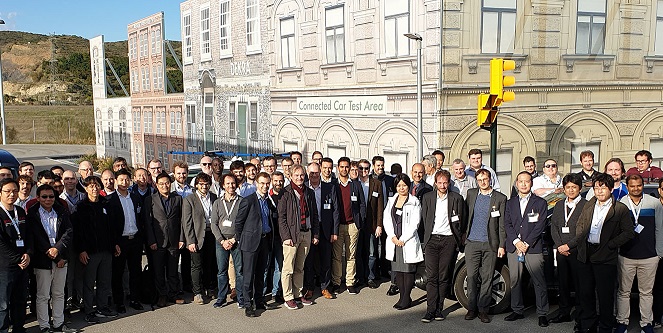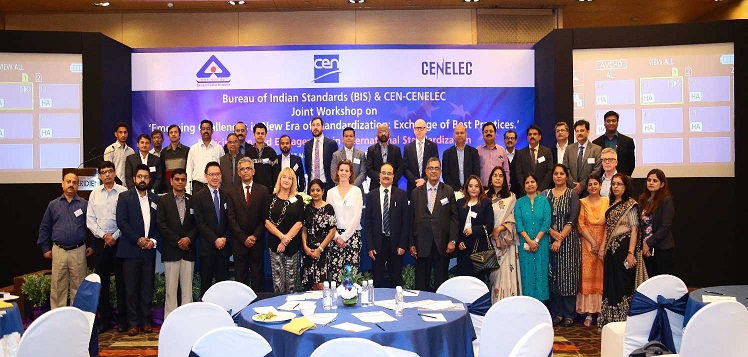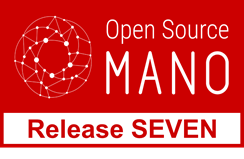The ETSI Industry Specification Group (ISG) for Network Functions Virtualisation (NFV) has started working on its next specification release, known as Release 4. While NFV-based deployments are expanding worldwide and show the benefits of network function virtualization, new technologies are expected to be leveraged and features are being added in support of 5G and novel fixed access network deployments that are emerging in many countries.
Release 4 addresses several new issues in the following technical areas: the evolution of the NFV framework to support the most recent cloud, software, and virtualization techniques; novel management architectural styles and operationalization aspects, leveraging virtualization characteristics to simplify deployments; and increased support for automation. While the ETSI ISG NFV is transitioning into the new release, the group will also continue the maintenance of Release 2 specifications, dealing with implementable protocol and data models, as well as their counterpart testing specifications to the end of 2019 and into 2020.
The first ETSI C-V2X Plugtests, performed in partnership with 5GAA, came to a close with a success rate of 95% of the executed tests, showing an extremely positive level of multi-vendor interoperability. 320 test scenarios were executed in lab and field environments for interoperability with 70 people present onsite for testing.
This event enabled vendors to run test sessions to assess the level of interoperability of their implementation and validate the understanding of the ETSI TC ITS and 3GPP standards. The ETSI 5GAA joint workshop which was organized in parallel, addressed C-V2X interoperability and deployment. Leading speakers from the European Commission, the Dutch Ministry of Infrastructure and Global Certification Forum presented the latest updates on ITS deployments and certifications. This week-long face to face PlugtestsTM , provided an opportunity to test C-V2X devices. Field interoperability testing included road hazard signalling, road works warning, longitudinal collision risk warning and intersection collision risk warning.
ERTICO – ITS Europe and 5G Infrastructure Association (5G IA) has signed a Memorandum of Understanding (MoU) to facilitate the roll out of Intelligent Transport Systems and Services (ITS) supported by a secure and trustworthy 5G communication network in Europe. The mission of 5G IA is to create the next generation of communication networks and services. Ubiquitous connectivity will enable the European industry to successfully compete on global markets, open up new innovation opportunities and facilitate the creation of new services to the benefit of the society, including for mobility.
The mission of ERTICO is to deploy by 2030 greater and safer automation and connectivity, ensuring the rollout of systems that monitor and manage traffic of vehicles carrying people and goods, providing direct control on them.
ETSI has announced two major specifications from the ETSI Zero-touch network and Service Management (ZSM) Industry Specification Group. ETSI GS ZSM 001 describes ZSM Requirements and ETSI GS ZSM 002 defines the ZSM Reference Architecture. The glossary of terms and concepts related to ZSM is provided in ETSI GS ZSM 007 that was published along with these specifications.
ETSI GS ZSM 001 examines various business-oriented scenarios and the related automation challenges faced by operators and other industry sectors, and defines the architectural, functional and operational requirements for end-to-end network and service automation. The ZSM architecture specified in ETSI GS ZSM 002 was designed to satisfy these requirements. The architecture is modular, flexible, scalable, extensible and service-based. It is designed for closed-loop automation and optimized for data-driven machine learning and artificial intelligence algorithms.
Boosting Innovation Through Standards
CEN and CENELEC held the high-level 1- day Standards + Innovation Conference ‘Boosting Innovation Through Standards’ with the aim of fostering the market uptake of innovation and research outcomes by using standardization as an enabler. Leading experts in innovation and standardization presented their experiences in linking the two worlds and highlighted how each one is benefiting from the other. Know more about the conference and how standards can boost innovation thanks to the new dedicated webpage.
Discover how European standards contribute to the success of research and innovation activities, facilitating market uptake, finding partners (e.g. industry, policy, consumer) for your activities, using existing knowledge, transferring know-how or easing the access to financial resources.
CEN and CENELEC announced that, after two years of continuous dialogue with all actors involved in the citation process, the EC has cited in the Official Journal of the European Union (OJEU) several lists of Harmonised European Standards (hENs). This important development signals a relevant turn in the process of reducing the citation backlog of harmonised standards, to the benefit of the industry and consumers.
In particular, the lists of standards cited cover the following sectors: Toys safety, New Legislative Framework, Electromagnetic Compatibility, Explosives Atmospheres, Pressure Equipment, and General Product Safety. Overall, this citation exercise includes more than 60 new references.
CEN and CENELEC Members have identified India as a key priority market. The objective of CEN and CENELEC is to cooperate more closely with the Bureau of Indian Standards (BIS) and other relevant Indian standardization bodies on various topics of mutual interest, in order to create synergies. As a first step towards creating a close working relationship with BIS and to understand the commonalities and gaps on standardization strategy and the standards development process, a two-day joint workshop was organised by BIS and CEN & CENELEC on 26th and 27th November 2019 in New Delhi, India. The workshop helped identify significant common areas of mutual interest between BIS and CEN & CENELEC, which will be explored further for collaboration between the two regions.
The ETSI Open Source MANO group unveiled its latest release, OSM Release SEVEN. This release brings cloud-native applications to NFV deployments, enabling OSM to on-board over 20,000 pre-existing production-ready Kubernetes applications, with no need of any translation or repackaging. OSM release SEVEN allows you to combine within the same Network Service the flexibility of cloud-native applications with the predictability of traditional virtual and physical network functions (VNFs and PNFs) and all the required advanced networking required to build complex end to end telecom services.
In addition, Release SEVEN extends OSM's SDN framework to support the next generation of SDN solutions providing higher level primitives, increasing the number of available options for supporting I/O-intensive applications. Furthermore, the plugin models for intra and inter-datacenter SDN have been consolidated, and the management, addition and maintenance of SDN plugins significantly simplified. Release SEVEN also brings major enhancements designed to improve the overall user experience and interoperability choices. This includes an improved workflow for VNF configuration which allows much faster and complex operations, and the support of additional types of infrastructures, such as Azure and VMware's vCD 10, etc……
CEN, CENELEC and ETSI, the three European Standardization Organizations (ESOs), jointly developed EN 301549:2019 ‘Accessibility requirements for ICT products and services’. The new standard is intended in particular for use by public authorities and other public sector bodies during procurement, to ensure that websites, software and digital devices are more accessible – so they can be used by persons with a wide range of disabilities.
EN 301549:2019 sets out the functional accessibility requirements that can be applied to all digital technology, including websites, software, electronic devices, and mobile apps. The aim is to ensure that ICT products and services are accessible either directly or through compatibility with assistive technologies such as text-to-speech, so that everyone can access information and use services that are being delivered electronically. The new standard is a revision of a previous version, published in 2018. It sets out the functional accessibility requirements that can be applied to all digital technology, including websites, software, electronic devices, and mobile apps.
European Commission had published its Circular Economy Action Plan in 2015 and requested the three ESOs – CEN, CENELEC and ETSI - to develop standards to support Ecodesign requirements on material efficiency aspects for energy-related products, covering the following aspects: extending product lifetime, ability to reuse components or recycle materials from products at end-of-life, use of reused components and/or recycled materials in products. In this context, the CEN-CENELEC JTC 10 ‘Energy-related products - Material Efficiency Aspects for Ecodesign’ (CEN-CLC/JTC 10) has published the following standards in 2019:
- EN 45555:2019 ‘General methods for assessing the recyclability and recoverability of energy-related products’;
- EN 45556:2019 ‘General method for assessing the proportion of reused components in energy-related product’
- EN 45558:2019 ‘General method to declare the use of critical raw materials in energy-related products’;
- EN 45559:2019 ‘Methods for providing information on material efficiency aspects of energy-related products’.















